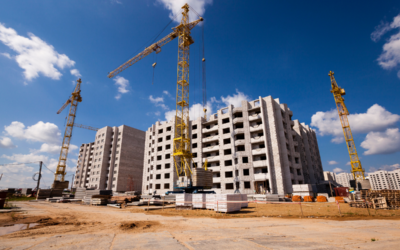Introduction
Christmas has come early for a wind farm operator in Victoria with a recent decision in the Supreme Court of Victoria determining in their favor and adding to authority on how renewable energy infrastructure built on leased land (such as wind turbines) is to be valued for purposes of local government rates and levies.
On 16 December 2020 Justice Richards of the Supreme Court of Victoria added to the storied history of fixtures and fittings, handing down judgment in the case of AWF Prop Co 2 Pty Ltd and Ararat Wind Farm Pty Ltd v Ararat Rural City Council and Valuer General Victoria [2020] VSC 853.
The case involved the consideration of the ratable value of rural land the subject of various wind farm leases. Of particular interest was her Honour’s assessment of whether the various wind farm plant and equipment amounted to fixtures forming part of the land to be valued, or mere chattels.
Ultimately the court ruled that certain above ground assets were not fixtures at common law and should not be included in the assessment of ‘capital improved value’ when calculating local government rates and levies.
Background
Ararat Wind Farm, a 75 turbine wind farm near the town of Ararat in rural Victoria is operated by Ararat Wind Farm Pty Ltd (AWFPL). AWFPL occupies the land through 16 leases between AWF Prop Co 2 Pty Ltd (AWF Prop Co) and various land owners. The leases were generally for a 25 year term with a further 25 year option term.
Under the leases, the lessee agreed to pay any additional rates, taxes, assessments and outgoings imposed on the land due to the lessee’s occupation. The wind farm was comprised of many assets including wind turbines, underground cabling, as well as substations, roads and wind monitoring equipment.
In particular the wind turbines were connected to the land via either a rock anchor or mass gravity foundation for safety and operational reasons. The wind turbines were demountable from the foundation and could be removed individually without substantial damage to the wind tower or the land.
In March 2018 the Ararat Rural City Council (Council) issued a rate notice for the fire services levy, specifying a site value of $14,560,000 for the land and a capital improved value of $470,000,000. It sought to base the levy on the capital improved value.
AWFPL contended that the value of the land for the purposes of the local government levies was the site value. The key issue in dispute between the parties was whether the ‘AWF Assets’ (primarily the wind turbines) form part of the land to be valued.
Decision
There is a presumption that objects that are affixed to land, to any extent, are fixtures and form part of the land. The presumption can be displaced where it can be shown that when the item was affixed the objective intention was that it would not form part of the land. Particularly the degree of annexation and the object of annexation are commonly regarded as key factors in determining this objective intention.
The Court determined that the above ground assets were not attached to the land with the intention that they be fixtures and set out the following as reasons supporting that conclusion:
1.The planning permits under which the wind farm was built required the removal of the “above ground assets” when the wind farm was decommissioned – from the outset the requirement was always that the above ground assets were not to be permanently affixed to the land.
2.The leases under which AWF Prop Co occupy the land require the removal of the above ground assets at the end of the lease. In this case, the agreement was that the foundations and access roads only would remain.
3.The wind farm assets were all owned by AWF and were used as security for the construction finance for the wind farm.
4.The wind farm assets were all designed so that they could be removed without damaging the land or the assets themselves.
5.The design and working life of wind farm assets was 25 years (which roughly lines up with the term of the lease). There was never any intention for them to be permanently affixed and the exercise of the option would likely require the replacement of the turbines.
6.If removed, the wind farm assets could be re-deployed and used at another site or on sold for parts.
7.Finally, her Honour noted that the assets were affixed to leased land and there was every indication that the above ground assets would remain the property of AWF Prop Co.
Her Honour ruled that the objective intention of the parties was that the above-ground AWF assets being wind turbines and towers, a substation, wind-monitoring masts, and certain structures were not be permanently affixed to the land. This displaced the presumption made by the Council that they were fixtures. In contrast, turbine foundations, roads, fences, carpark, and the underground cabling were fixtures and part land to be valued.
Conclusion
The case highlights that the determination (at least at common law) of whether or not physical asset(s), especially those used by lessees in the renewable energy sector, will amount to a fixture or a mere chattel is one determined on the facts of each case.
Renewable energy and government participants alike should take note of the particular facts of this case and how they might apply to their own situations, particularly when drafting make good provisions in wind and solar farm leases.
At this stage her Honour has not made final orders and has indicated that she is unlikely to do so until after 11 January 2021. In the meantime however government bodies should consider how this decision impacts their model litigant obligations.
If you would like to know more about how this decision will affect your business, or need assistance at the front or back end of your project, please contact Greg Lee on 02 8235 1254.


